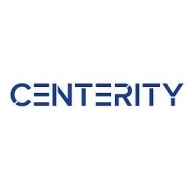

Centerity Monitor and Nagios Core are competing in the IT monitoring space. Centerity Monitor appears to have the upper hand with its built-in analytics and automated insights, whereas Nagios Core offers superior customization and a strong plugin ecosystem.
Features: Centerity Monitor provides real-time performance analytics, automated incident response, and comprehensive monitoring solutions. Nagios Core offers flexibility, a wide range of plugins, and customizable monitoring setups.
Room for Improvement: Centerity Monitor could enhance compatibility with third-party tools, offer broader customization options, and improve the granularity of monitoring metrics. Nagios Core should simplify its installation process, provide more comprehensive out-of-the-box features, and enhance its user interface for ease of use.
Ease of Deployment and Customer Service: Centerity Monitor provides a streamlined deployment experience with dedicated support for quick setup. Nagios Core, while offering a more manual installation, benefits users familiar with open-source systems, allowing for extensive customization and self-service support.
Pricing and ROI: Centerity Monitor justifies its set-up costs with high ROI due to automation and a comprehensive dashboard. Nagios Core, as an open-source solution, requires minimal initial costs but accumulates additional expenses for plugins and customizations.
| Product | Market Share (%) |
|---|---|
| Nagios Core | 2.4% |
| Centerity Monitor | 0.4% |
| Other | 97.2% |
| Company Size | Count |
|---|---|
| Small Business | 20 |
| Midsize Enterprise | 11 |
| Large Enterprise | 22 |
This is IT infrastructure monitoring's industry-standard, open-source core. Free without professional support services.
We monitor all IT Infrastructure Monitoring reviews to prevent fraudulent reviews and keep review quality high. We do not post reviews by company employees or direct competitors. We validate each review for authenticity via cross-reference with LinkedIn, and personal follow-up with the reviewer when necessary.